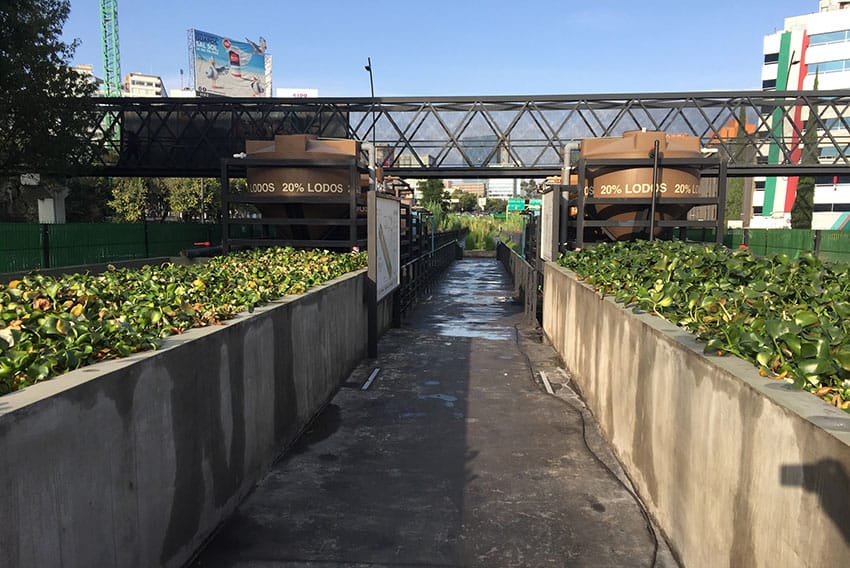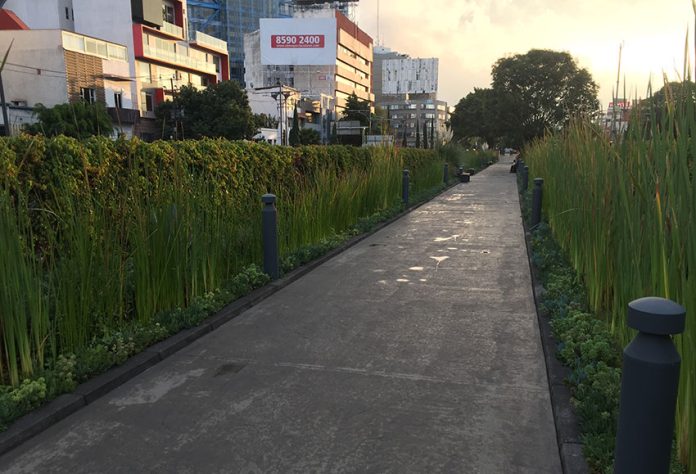In a city that’s no stranger to water shortages, one public park not only provides space for jogging and dog walking, it purifies thousands of liters of wastewater a day for reuse.
Mexico City’s Ecoducto is a linear green space where a system of artificial wetlands purifies 30,000 liters of sewage daily, enough to fill the city’s 87,000-seat Estadio Azteca soccer stadium each month.
The artificial wetlands were designed by Dr. Alejandro Alva, a hydrobiologist at the National Autonomous University (UNAM).
“One of the lasting lessons we wanted to leave with this project was to show the possibility of creating wetlands inside of cities, that we can rescue natural water systems in urban areas,” Alva said in an interview with CGTN America.
The Ecoducto park is located on the median of the Viaducto Río de la Piedad, one of Mexico City’s busiest thoroughfares, itself constructed atop a subterranean river. The river was channeled into an underground tunnel in 1942, and the highway was built above ground in the 1950s.

Since then, the river has flowed on, unseen and unconscionably filthy. The Ecoducto project aims to be an example for similarly polluted urban waterways both in Mexico and abroad.
And the idea is starting to catch on, according to urban planning architect María del Mar Tomás.
“More and more in modern developments, we are seeing that water recycling systems are being installed, because in the case of water crises, this type of infrastructure in your own building makes you less dependent on the main supply,” she said.
Tomás is an organizer of the Open House CDMX architecture festival, which showcased the Ecoducto park this year.
Mexico City Mayor Claudia Sheinbaum has presented an environmental plan to bring water service to every home in the city within six years, an ambitious goal that highlights the importance of projects like the Ecoducto to make every drop count.
Mexico News Daily
